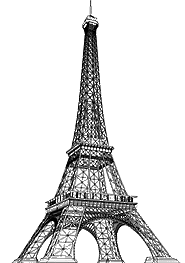Franz Reichelt
From The Art and Popular Culture Encyclopedia
|
Related e |
|
Featured: |
Franz Reichelt, also known as Frantz Reichelt or François Reichelt (1879 – February 4, 1912), was an Austrian-born French tailor, inventor and parachuting pioneer, now sometimes referred to as the Flying Tailor, who is remembered for jumping to his death from the Eiffel Tower while testing a wearable parachute of his own design. Reichelt had become fixated on developing a suit for aviators that would convert into a parachute and allow them to survive a fall should they be forced to leave their aircraft. Initial experiments conducted with dummies dropped from the fifth floor of his apartment building had been successful, but he was unable to replicate those early successes with any of his subsequent designs.
Believing that the lack of a suitably high test platform was partially to blame for his failures, Reichelt repeatedly petitioned the Parisian Prefecture of Police for permission to conduct a test from the Eiffel Tower. He was finally granted permission in early 1912, but when he arrived at the tower on February 4 he made it clear that he intended to jump himself rather than conduct an experiment with dummies. Despite attempts by his friends and spectators to dissuade him, he jumped from the first platform of the tower wearing his invention. The parachute failed to deploy and he crashed into the icy ground at the foot of the tower. Although it was clear that the fall had killed him, he was taken to a nearby hospital where he was officially pronounced dead. The next day, newspapers were full of the story of the reckless inventor and his fatal jump – many included pictures of the fall taken by press photographers who had gathered to witness Reichelt's experiment – and a film documenting the jump appeared in newsreels.
Reichelt's preparations and fall were captured on film by cinematographers who had turned up to record his experiment. The film also included scenes of the body being removed and the measurement of the hollow created by Reichelt's impact.
See also


